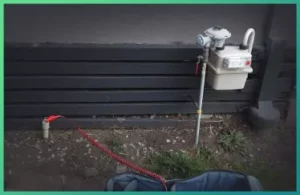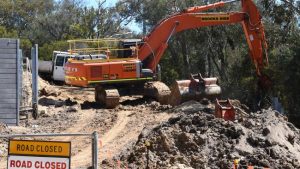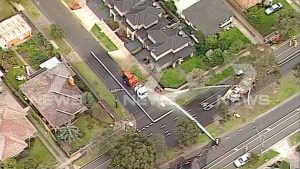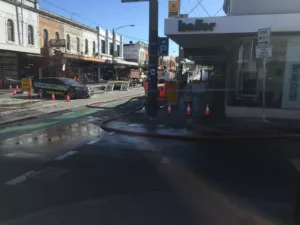It’s been just short of 5 years since I did a blog post on our website.
With so many social media platforms available these days, I haven’t felt the need to publish content on here, when we post on every other platform.
However, there is a subject I want to discuss, that generally, I would probably do on Linkedin but despite the character limit increase that they have implemented recently, I still don’t have enough room on there for this one.
Even on Youtube, we have gone over the word limit in their description field, so it has led me back to a good old fashioned blog post on our own website.
Now, before I go on, speaking of social media. If you have come to this blog post after reading the first part of it on Linkedin, then click here and it will take you to where you left off.
If you are here after reading the first half of the description on Youtube, then click here and this link will take you to where you left off on that one.
If however, you haven’t come to this page from any of the social media platforms and are reading this all for the first time then feel free to keep reading on from here.
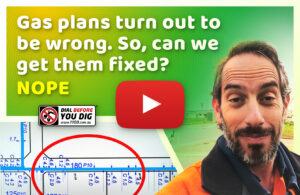
I should also explain, this was initially just meant to be a video. I prefer to produce video content than written content, as those of you that follow us on any of the social media platforms would already be aware of, so if you do want to watch the video I created for this topic, then just click this thumbnail or this link here and it will take you to the video which we have placed in Youtube.
However, the reason I am adding a written aspect to this post is that in the video I do end up just going on a bit of a rant.
Don’t get me wrong, I’m still happy I did the video, but of course, in hindsight, if I had a script or if I did the video during the actual works out there, then I think it may have come out better.
But as most of you that watch my daily videos would know, that is not how I roll.
I generally just see something, go and grab the camera or if I don’t have a camera with me, then just get out my phone and start shooting.
So hence, for this particular topic, in addition to doing the video, I will also create this written post, so that, hopefully, it will get my point across a lot better and more succinct than what I did in the video.
What do we do when a Dial Before You Dig plan is wrong?
We all know, (well, all should know) that the plans you get back from the FREE, Dial Before You Dig referral service, are to be used as a guide only and are not to be relied on.
If you are about to start excavating on a job site, despite what underground services may or may not be shown on the DBYD plans, you still need to go through the effort to locate where every underground utility is first.

But, my issue is …….what do we do when we go to locate something and find where its actual location is and where the Dial Before You Dig plans have said it is are actually two different places and the plans are in fact wrong? The answer – Nothing.
As in, there is no proper, systemised way for us professional service locators to let the utility companies know that the plans they are giving out through the DBYD system are wrong or have a mistake on them.
Now for those of us that have been around for some time, we have generally been able to build a few connections with different people in different utility companies and we can sometimes get this info about the plans being wrong through the backdoor to the right person so that the plans can get updated. But staff at these companies do move on and then you need to try and go through the effort to set up new connections again and explain why you are doing what you are doing.
And that is probably the next point to bring up here and that is the question of why am I even bringing this up?
As a skilled locator, it’s to my advantage for these plans to be wrong. Especially for someone like myself, who has literally got tens of thousands of hours logged in the field, locating underground services and acquiring knowledge of what areas have wrong DBYD plans.
There are more new companies than ever before that are getting into the locating industry, many of whom constantly try to undercut me to win work.
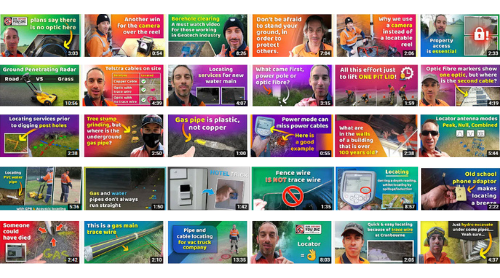
I should be taking advantage of my knowledge of where plans are wrong, to give me a competitive advantage over these new competitors.
But despite that, I’d still like to see this issue rectified.
Those of you that know me, will know, I’m not in this game to crush the competition. I’m in this to protect the underground service and those that are working in their vicinity. Hell, if I wanted to crush competitors I would not be doing hundreds of videos trying to help educate and improve the industry.
We need to have a centralised system where, if we see something that is incorrect on a plan, we can submit it and the right person in that utility company can get the submission and they can then do their investigation and make the changes that need to be made, if they feel they need to be made.
Right now with Dial Before You Dig, it’s a one-way pipeline. We put the request in and the plans get sent back to us. I’d love if there was a pipeline the other way, where if we have an issue or see something wrong, there is a way of getting the info back to the utility company.
The system already exists
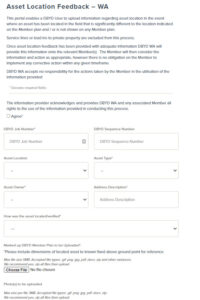
For those interested in taking a look at how WA DBYD have got it set up, you can click this link here and it will take you to their webpage where the form is accessed.
Unfortunately, however, the way Dial Before You Dig is set up in Australia, is that each state is run independently. Whatever one state does, it does not affect or get implemented by other states. So for this system, each state would have to set up their own system, as WA has done. Or, what I personally think would be better still, is if the National body of DBYD could provide a system that everyone else could use, similar to how they have currently got the one main website and enquiry system that everyone uses. So that regardless of what state you might be working in, when you log in to lodge your free DBYD request, it is done through the same platform Australia wide.
There would obviously have to be parameters that would need to be put in place and rules to what is classified as wrong and what is just the way the plan is drawn up.
Such as a 2 pair cable running to a house. The plan might show it going from a pit in the street diagonally to the centre of the house site.
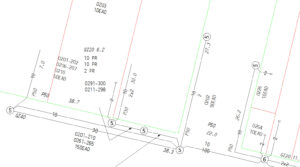
But in fact, the cable runs from the pit, along the footpath and then right angles to the house in the middle of the block. Is this plan wrong?
Well, technically yeah, but does it need updating, I’d say no, but a homeowner or even a local contractor working at the property might say yes and might submit it for review.
If this happened the system could get overwhelmed with submissions.
So do you maybe have the system only open to certified locators as we generally have a better understanding of what is a mistake on a plan and what is just a plan drawn very roughly? But the only issue then is, what happens in the outback where they have no DBYD certified locators available? Let’s say a guy installing a new water tapping finds an optic fibre that the plans show on one side of the street but in fact, it is on the other side of the street. This is definitely a mistake and the plan should be fixed.
I guess all these sorts of finer details can be sorted out at a later stage, for now, we need to get some consensus that this system is actually needed.
No one ever likes change, but, as the famous quote goes, ‘if you don’t move forward you’re moving backwards’
I do already know we will get resistance from locators, of whom this system would actually be helping. The reason I know this is not just simply because a lot of them are old school and hate change, although it is true for some of them. But because I have actually been talking about this very topic for a few years now, generally at conferences and industry meetings.
Some of the arguments that they bring up are that they feel it will increase the amount of administration they have to do, it will reduce the number of customers that call them to do locating and they just generally like being able to show that they are of value and like showing how the plans are always wrong.
And yeah I get that. I too, like rocking up to a construction site and having the project manager question why I’m even there and have them tell me that they have all the plans from DBYD and they know where everything is and that the plumber is crazy and is wasting money getting me out to the site. And then I go through and locate a heap of things that they didn’t know about or that are different to what they saw on the plan. So, yeah, I totally get the satisfaction we all get from this.
But wouldn’t it also be nice to not hear at every second job that you go to that DBYD plans are shit and there is no point even getting them and don’t bother looking at them as they are always wrong.
Now, of course, we all know that a lot of this comes down to education, and in fact, often the Dial Before You Dig plans are not wrong but they are just drawn differently to what the contractor is used to being able to read.
However, can you imagine how much more credibility the whole Dial Before You Dig system would have, if only they had a process to allow for the plans, that truly are wrong, to be submitted for review?
Accountability – Coroners Court
I’ve often use the power cable – coroners court scenario when discussing this matter, so, for those of you that have heard me bring this up in the past can just skip through this section.
The scenario is; I, the locator, get called out to a job where guys are working in the nature strip. I review the DBYD plans and it states that there is no power in the area. I start locating the other underground services that are on site and find that there is, in fact, an underground power cable out there. I go and mark its location on the ground and inform the guys excavating, of where it is, so they can avoid it. They finish their works without damaging any of the underground services, everyone gets to go home safely and it is just one more successful job that I have completed.
Two years time another contractor is working in the area. He does his own DBYD request and sees that the plans state that there is no power in the area. He goes and starts his works and hits the power cable and is killed.
Now, have I done anything wrong? Well no, if he had called me and asked me to come out and do the locating for him then I would have told him about this cable. But he is now dead so it’s too late for him to now learn from his mistake.
The case ends up in the coroner’s court. They investigate the matter and during the investigation find that I did locating out there two years earlier and that I had found power in the area.
I get called up to testify and the question gets asked of me, “Did I do everything in my power to inform the relevant bodies that there was a cable in the area that was not shown on the utility plans that were provided by Dial Before You Dig?”
What do I respond with, “Well sir, there is no formal way of letting anyone know about this cable, so I did nothing” Yes that is one response and it is very true. I would probably be able to walk away from court without any blame put on me. But would I be able to sleep?
Now in reality, for those of you that do know me, do you think I really would have done nothing?
No, what I probably would have done, if I saw a power plans wrong is make a few phone calls and try and get on to the right person and let them know, although lately, I’m finding this is becoming much harder.

But, could you imagine how good it would be if there was a proper system in place that would allow us to lodge any issues we have with the plans we have received from Dial Before You Dig, that could then be sent to the relevant bodies. This would create a universal register that, if needed, could be looked up in the future and it could prove if a locator did do everything in his power to let the utility company know about this cable that was not on a plan.
So my point is, for us locators, having a system like this in place will actually benefit us individually and as an industry. It will also benefit utility companies as they would then have another means of seeing if the plans they are initially getting back from their contractors that are installing these services are correct. After a few years, they would even be able to see trend lines and find which contractors are putting pride in their work and which ones are not and that they should not be using.
Really it is a win-win for all involved.
Let’s try and raise the level of professionalism in the locating industry
If a surveyor gets out to a site and finds an issue with a permanent benchmark, they report it.
If an electrician discovers an issue with a power cable, they report it
If a plumber comes across an issue with a water main or sewer main, they report it.
There are many more examples I can use, but you get the point I am making.
These professions have built their reputation over the years as being experts in their fields because of the skill and the responsibility they hold.
I get that in the whole scheme of things the locating industry is still young compared to other professions. But it’s time we step up and start embracing the responsibility that this role actually provides. We took a massive step forward a few years ago by bringing in certification, of which the majority of the heavy lifting was done by Dial Before You Dig. We now need DBYD to step up once again and create a system for reporting plans that are wrong. This will help not only locators, not only utility companies but will also lift the reputation and the stigma around DBYD plans.
Regards Ben


